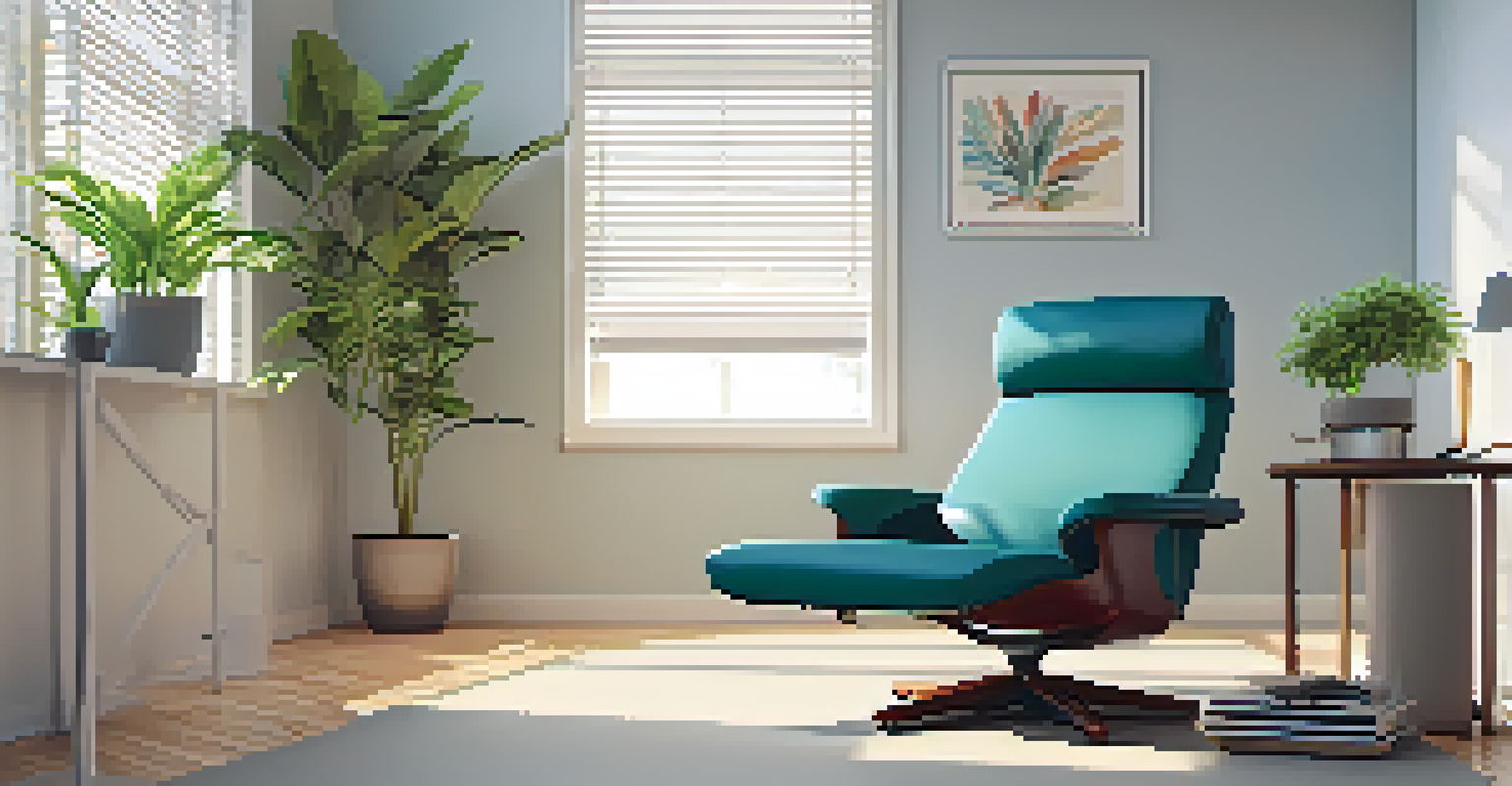The Importance of Napping: Sleep Hygiene Insights

Understanding Napping: What It Is and Why It Matters
Napping is a short sleep that can occur during the day, typically lasting from 10 minutes to a couple of hours. It's more than just a luxury; it's a valuable tool for enhancing our overall well-being. When we embrace napping, we’re tapping into an ancient practice that many cultures endorse for its myriad benefits.
Sleep is the best meditation.
Research shows that a well-timed nap can improve mood, alertness, and cognitive performance. Think of it as a quick recharge for your brain, much like plugging in your phone when the battery runs low. The key is to find the right duration and timing to avoid grogginess upon waking.
Incorporating naps into your routine isn’t just about catching up on lost sleep; it’s about optimizing your daily performance. Whether you’re a busy professional or a student juggling multiple responsibilities, a strategic nap can help you feel refreshed and ready to tackle whatever comes next.
The Science Behind Napping: What Happens to Your Body
When you nap, your body goes through various sleep stages, including light and deep sleep. This process allows you to recover from fatigue and restore energy levels, making it easier to focus and function. The benefits of napping extend beyond mere rest; they help with memory consolidation and emotional regulation.

Studies indicate that a brief nap can lead to increased alertness and improved cognitive function. Imagine trying to solve a challenging puzzle; sometimes, stepping away and resting your mind can provide clarity and insights you wouldn’t have otherwise found. It’s a natural way to give your brain a break.
Napping Boosts Well-Being
Napping is a valuable tool for enhancing mood, alertness, and cognitive performance.
Moreover, napping can lower stress levels and reduce the risk of burnout. Just as regular exercise strengthens your muscles, incorporating naps into your routine can enhance your resilience and overall health. By understanding the science of napping, you can harness its power effectively.
Different Types of Naps: Finding What Works for You
Naps come in various forms, such as power naps, longer naps, and even restorative naps. A power nap, lasting around 10 to 20 minutes, is perfect for a quick boost of energy without entering deep sleep. It’s like a brief pit stop that gets you back on the road quickly.
Napping is like a reset button for your brain.
Longer naps, typically lasting 60 to 90 minutes, allow your body to cycle through deeper sleep stages, which can be beneficial for memory and creativity. However, these naps may leave you feeling groggy if you wake up during deep sleep, so timing is crucial.
Restorative naps, often lasting around 90 minutes, enable a full sleep cycle, leading to more significant cognitive benefits. It’s all about finding the right type of nap that aligns with your personal needs and daily schedule, ensuring you reap the maximum rewards.
The Best Times to Nap: Timing Is Everything
The timing of your nap plays a vital role in its effectiveness. Generally, the early afternoon, between 1 PM and 3 PM, is considered the optimal window for napping, as it coincides with a natural dip in alertness for most people. Think of it as your body’s way of saying it needs a little break to recharge.
Napping too late in the day can interfere with your nighttime sleep, leaving you feeling more tired than before. It’s like drinking coffee too late in the afternoon; while it may give you a temporary boost, it can disrupt your sleep later on. Finding that sweet spot is key.
Timing and Duration Matter
The effectiveness of a nap greatly depends on its timing and length, with early afternoon being the optimal window.
By paying attention to your body’s natural rhythms, you can optimize your napping schedule. This mindful approach not only enhances the benefits of napping but also contributes to better sleep hygiene overall.
Creating the Perfect Nap Environment: Tips and Tricks
To maximize the benefits of your nap, creating a comfortable environment is essential. Aim for a quiet, dark, and cool space to help signal to your body that it’s time to rest. Think of it as setting the stage for a performance; the right atmosphere can make all the difference.
Using an eye mask or earplugs can help block out distracting light and noise, making it easier to drift off. Additionally, consider incorporating calming scents, such as lavender, to promote relaxation. It’s all about crafting an inviting space that encourages restful sleep.
Don’t forget about your body’s comfort; lying down is ideal, but if that’s not possible, a comfy chair can work too. The goal is to create a mini oasis where you can unwind and recharge, making your nap experience more refreshing and enjoyable.
Overcoming Common Nap Challenges: Tips for Success
While napping offers numerous benefits, it can come with challenges, such as difficulty falling asleep or waking up feeling groggy. If you struggle to nap, consider practicing relaxation techniques, like deep breathing or gentle stretching, to prepare your mind and body for rest. It’s like warming up before a workout; these steps can help ease the transition into sleep.
Another common issue is the fear of oversleeping, which can make you hesitant to nap. To combat this, set a timer to ensure you wake up at your desired time. This way, you can relax and embrace the nap without worry, knowing you’ll be nudged awake when it’s time.
Create a Sleep-Friendly Space
A comfortable and quiet environment is essential for maximizing the benefits of your naps.
Lastly, listen to your body; if you’re consistently feeling tired, it might be a sign to reevaluate your overall sleep hygiene. Napping should enhance your well-being, not add stress, so keep experimenting with different strategies until you find what works best for you.
Embracing Napping as Part of Your Sleep Hygiene Routine
Incorporating napping into your daily routine can significantly enhance your sleep hygiene. It’s not just about catching up on lost sleep; it's about prioritizing your health and well-being. Think of napping as a self-care ritual that empowers you to perform at your best.
By embracing naps as a regular part of your day, you’re not only improving your alertness and mood but also fostering a healthier relationship with sleep. It’s about breaking the stigma that naps are only for the lazy; rather, they are a smart strategy for productivity and mental clarity.

As you explore the world of napping, remember that it’s a personal journey. Each person’s needs and preferences are unique, so take the time to discover how napping can work for you, ultimately enhancing your overall quality of life.